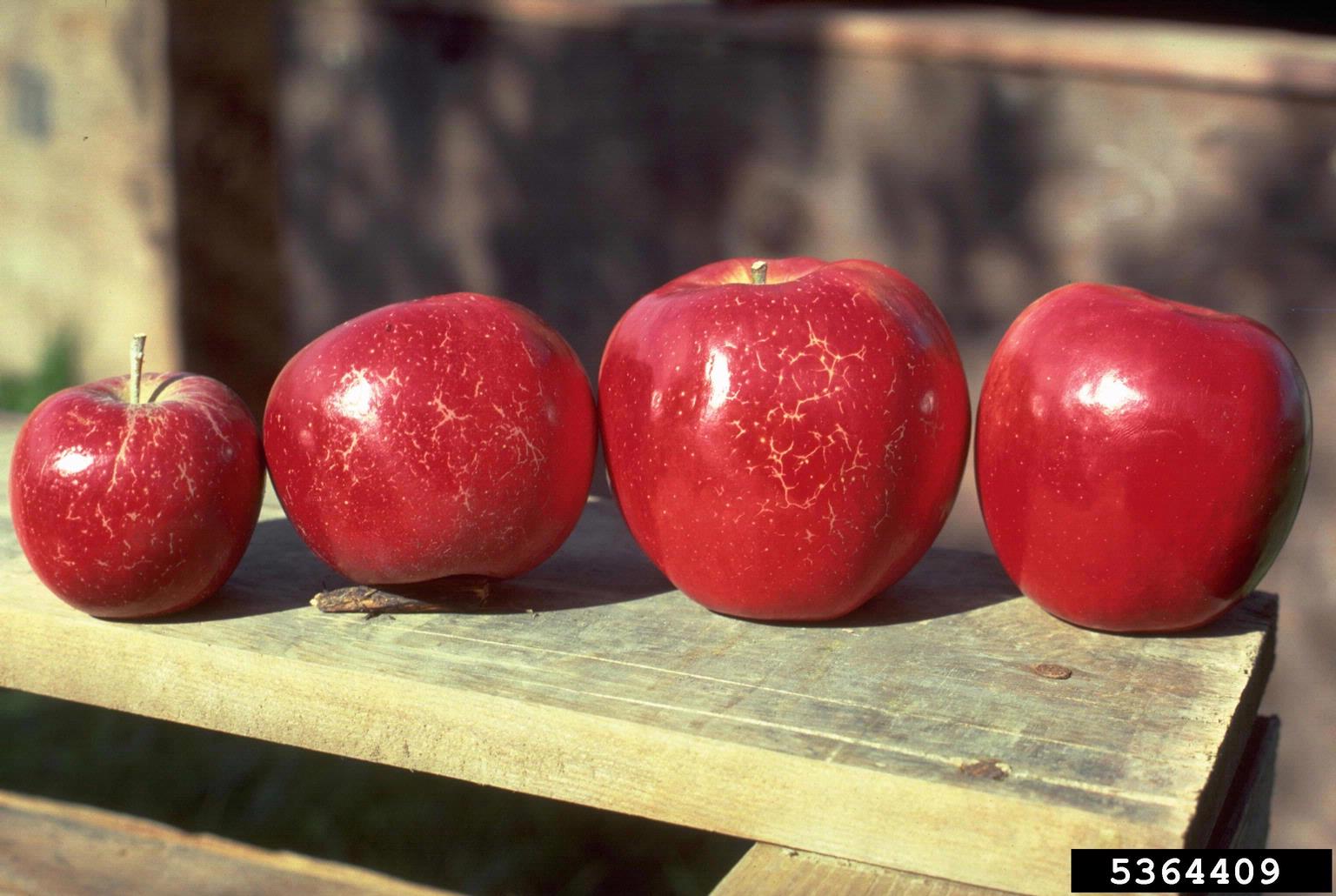Apple Russet Control: How To Prevent Russeting Of Apples


Russeting is a phenomenon that affects apples and pears, causing slightly harder patches of brown on the skin of the fruit. It doesn’t harm the fruit, and in some instances, it’s actually considered a feature, but it’s not always welcome. Keep reading to learn more about apple fruit russet and means of apple russet control.
What is Apple Russeting?
Apple fruit russet is the brown scarring that sometimes appears on the skin of the fruit. It is a symptom rather than a disease, which means it can have several different causes. One of the most common causes of apple russet is genetic tendency. Some varieties are so prone to it that they actually get their name from it, like Egremont Russet, Merton Russet, and Roxbury Russet. Other varieties like Pippin, Jonathan, and Gravenstein, while not named for it, are still very prone to apple fruit russet. If you’re uncomfortable with russeting, avoid these varieties.
Other Causes of Apple Russet
Although it’s naturally occurring in some apple varieties, the russeting of apples can also be a sign of more serious problems like frost damage, fungal infection, bacterial growth, and phototoxicity. Its presence is a good sign to check for these problems. Yet another cause of apple russeting is a simple case of high humidity and poor air circulation. (And it’s conditions like these that often lead to the more serious problems listed above).
Apple Russet Control
The most effective method of prevention is to keep trees well-spaced and reasonably pruned, with a strong but open canopy that allows good airflow and sunlight penetration. It’s also a good idea to thin the fruits themselves to one or two per cluster soon after they start to form in order to keep moisture from building up between them. Try to opt for varieties that are not known for russeting, like Honeycrisp, Sweet Sixteen, and Empire.
Sign up for the Gardening Know How newsletter today and receive a free copy of our e-book "How to Grow Delicious Tomatoes".

The only child of a horticulturist and an English teacher, Liz Baessler was destined to become a gardening editor. She has been with Gardening Know how since 2015, and a Senior Editor since 2020. She holds a BA in English from Brandeis University and an MA in English from the University of Geneva, Switzerland. After years of gardening in containers and community garden plots, she finally has a backyard of her own, which she is systematically filling with vegetables and flowers.